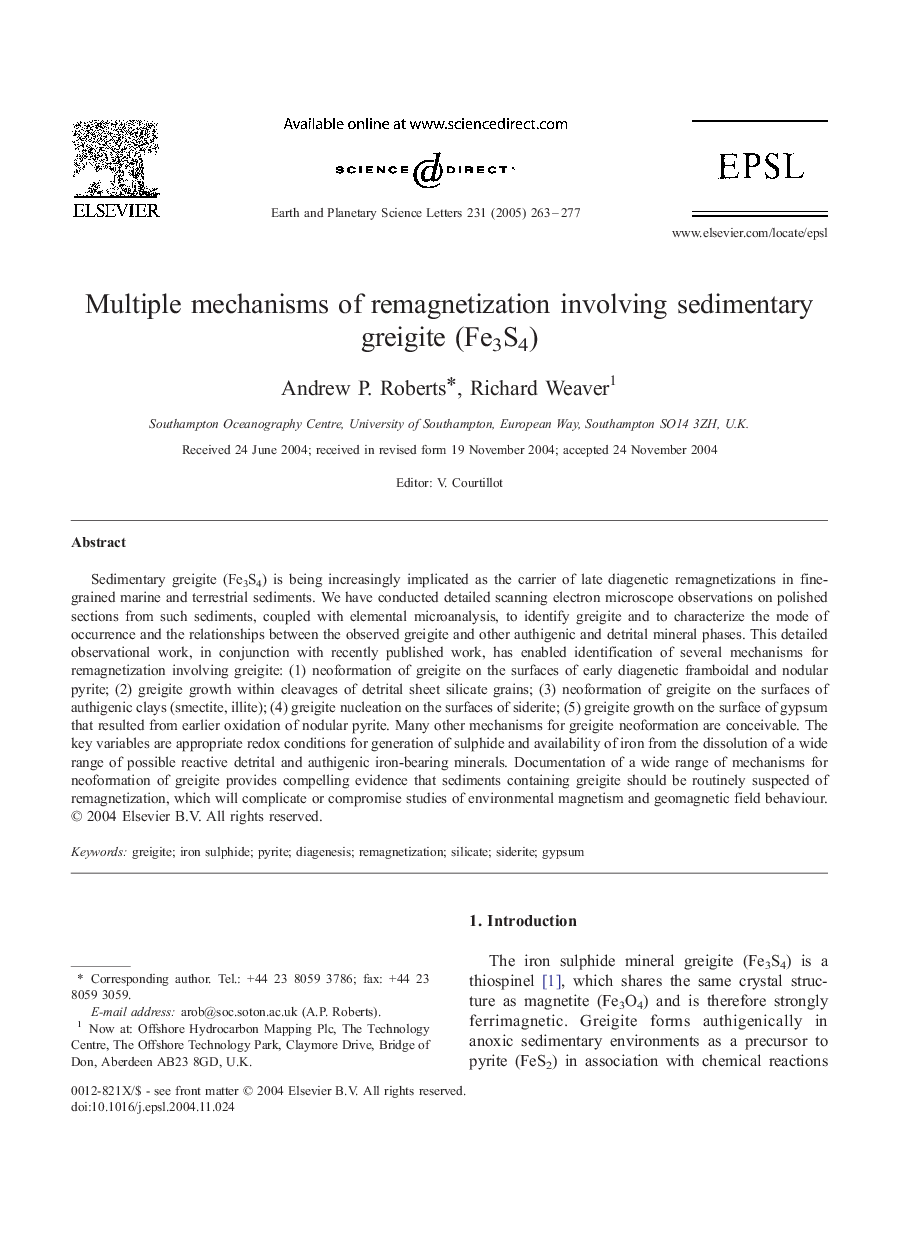| Article ID | Journal | Published Year | Pages | File Type |
|---|---|---|---|---|
| 9522381 | Earth and Planetary Science Letters | 2005 | 15 Pages |
Abstract
Sedimentary greigite (Fe3S4) is being increasingly implicated as the carrier of late diagenetic remagnetizations in fine-grained marine and terrestrial sediments. We have conducted detailed scanning electron microscope observations on polished sections from such sediments, coupled with elemental microanalysis, to identify greigite and to characterize the mode of occurrence and the relationships between the observed greigite and other authigenic and detrital mineral phases. This detailed observational work, in conjunction with recently published work, has enabled identification of several mechanisms for remagnetization involving greigite: (1) neoformation of greigite on the surfaces of early diagenetic framboidal and nodular pyrite; (2) greigite growth within cleavages of detrital sheet silicate grains; (3) neoformation of greigite on the surfaces of authigenic clays (smectite, illite); (4) greigite nucleation on the surfaces of siderite; (5) greigite growth on the surface of gypsum that resulted from earlier oxidation of nodular pyrite. Many other mechanisms for greigite neoformation are conceivable. The key variables are appropriate redox conditions for generation of sulphide and availability of iron from the dissolution of a wide range of possible reactive detrital and authigenic iron-bearing minerals. Documentation of a wide range of mechanisms for neoformation of greigite provides compelling evidence that sediments containing greigite should be routinely suspected of remagnetization, which will complicate or compromise studies of environmental magnetism and geomagnetic field behaviour.
Related Topics
Physical Sciences and Engineering
Earth and Planetary Sciences
Earth and Planetary Sciences (General)
Authors
Andrew P. Roberts, Richard Weaver,
